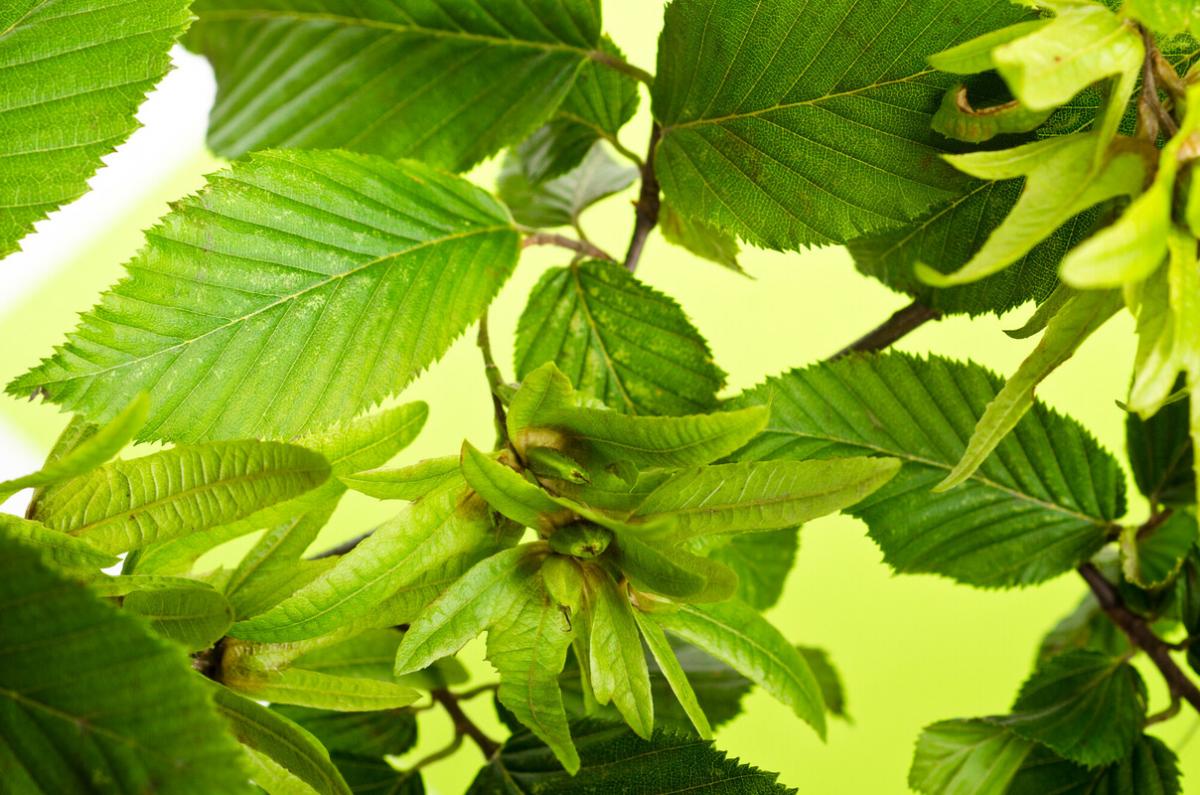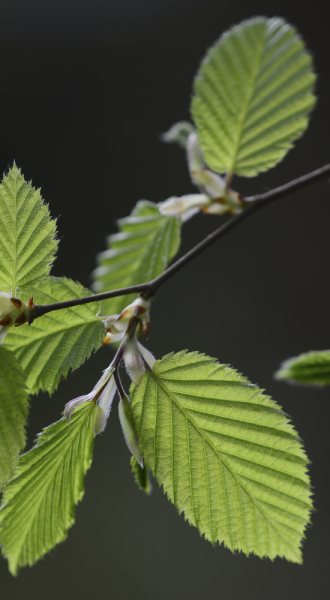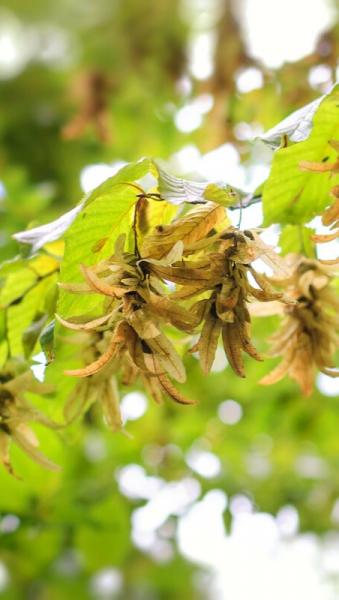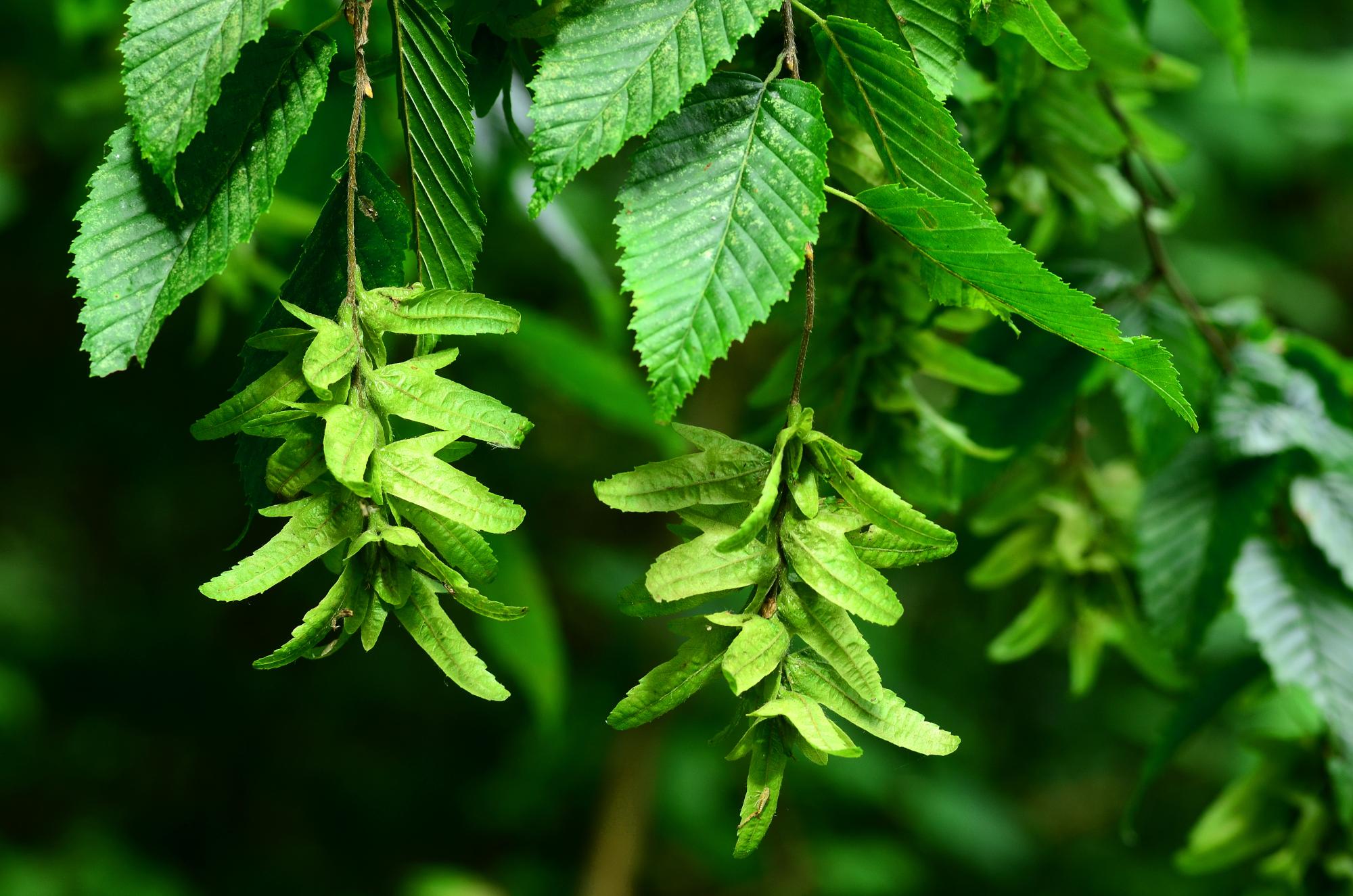
Species Name: Carpinus betulus
The hornbeam tree can grow up to a height of 30m, and typically lives about 150 - 200 years. Some trees, however, can live for over 300 years.
The bark is smooth with a light grey/olive colour.

The leaves are ovoid and doubly serrated along the entire leaf edge. In autumn, the dead leaves are usually retained on the stem, and only fall when the new green leaves emerge in spring.

Catkins appear in early summer. The hornbeam produces a small nut which is partially wrapped in a three-pointed leafy involucre.

Hornbeams can be normally found in woodlands within the southern British Isles. They can be seen alongside oak and or beech trees in the Forest.
In folklore, the hornbeam is a symbol of strength due to its hard, sturdy wood. It was once believed that tonics made from hornbeam leaves could cure fatigue and exhaustion.
The hardness of hornbeam timber, gave it the common name ironwood, as it would blunt saws quickly. It was the traditional raw material for making wooden-axled cartwheels and gears in early machinery, such as cogs in windmills and watermills. More recently, the wood is used for flooring, wood-turning and furniture making.
Hornbeam hedges can provide additional shelter for birds during the autumn/winter months, as the ability to retain its leaves gives animals extra cover for nesting, roosting and foraging. The trees are used as a food source by the larvae of some lepidoptera species, including the autumnal moth, common emerald, feathered thorn, walnut sphinx, svensson’s copper underwing, and winter moth.
The name ‘hornbeam’ derives from the hardness of the wood (likened to horn) and the old English word ‘beam’, meaning ‘tree’.
5% of the trees we are planting in the Forest this season are hornbeam trees.




